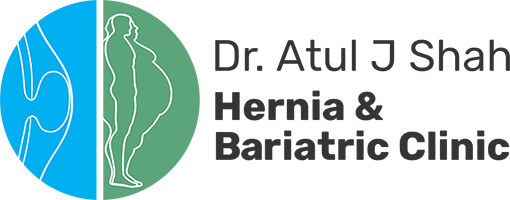When it comes to diagnosing and treating disorders that affect the oesophagus, stomach, and duodenum, Upper GI Endoscopy is the gold standard. Dr Atul Shah provides GI Endoscopy in Ahmedabad. If you’re dealing with gastrointestinal issues or simply need a routine check-up, a Upper GI Endoscopy can help you get a better diagnosis and a optimum treatment.
What is an upper GI endoscopy?
Your oesophagus, stomach, and the beginning of your small intestine make up what is called the upper gastrointestinal tract. Upper GI endoscopy is used to diagnose and treat conditions affecting the oesophagus, stomach, and duodenum.
How is an Upper GI Endoscopy Performed?
An endoscope, a long, flexible tube, is used for this treatment. On one end of the tube is a miniature video camera and light. A nasogastric tube is inserted down the patient’s throat. After that, it makes its way through the digestive tract at a slow pace from the stomach to the duodenum. The tube’s video feed is displayed on a screen.
What is an Endoscope Used For?
The endoscope can be equipped with a variety of small instruments. You can use these instruments to:
● Collect tissue samples for a biopsy.
● Get rid of anything blocking your upper digestive system, including meals.
● Inject fluid or air
● Stop bleeding
● Use therapeutic measures like endoscopic surgery or laser treatment, or enlarge a constricted space
Why you might need an upper gastrointestinal endoscopy?
Problems in the upper gastrointestinal system can be diagnosed and treated with the help of an endoscopy.
It is commonly utilized to determine the root of mysterious health issues, such as:
● Inability to swallow.
● To know what is causing abnormally low body weight
● Abdominal pain or non-cardiac chest discomfort
● Inexplicable, chronic vomiting (intractable vomiting)
● Upper gastrointestinal bleeding
Some conditions that can be diagnosed with the help of an upper gastrointestinal endoscopy include:
● Gastroesophageal reflux disease
● Blockages or other forms of restriction
● Detect esophageal varices
● Sores, inflammation, and redness ulcers
● Detect Malignant tumours and benign tumours.
● Hiatal hernia
● To detect injury due to accidental ingestion of harmful compounds that can cause serious trauma.
● Disorders involving gluten intolerance
● Check for Symptoms of upper gastrointestinal Crohn’s disease
● Oesophageal and gastric infection
Upper gastrointestinal endoscopy is useful for diagnosing and treating gastrointestinal issues.
This method can be employed to:
● Stopped a haemorrhage
● Take out the growths or tumours (polyps)
● loosen up tight spaces
● Take away any potential stowaways
● Use a laser for treatment.
● Percutaneous gastrostomy tube insertion
● Tie off the esophagus’s aberrant veins (esophageal varices)
● Biopsies and samples of digestive tract fluid can both be obtained with the aid of an endoscope.
● After surgery, an upper gastrointestinal endoscopy is used to inspect the stomach and duodenum.
Your doctor may also suggest an upper gastrointestinal endoscopy for other reasons also.
How to prepare for Upper GI Endoscopy?
● Within the 8 hours leading up to the exam, you shouldn’t eat or drink anything. It’s common practice to stop serving food and drink at midnight. Further recommendations regarding a particular diet for the preceding 1–2 days of the surgery may be provided.
● Inform your doctor if you are pregnant or believe you might be.
● Do not keep your bleeding condition a secret from your doctor.
● Blood-thinning medications, including aspirin, ibuprofen, and other medications that alter blood clotting, should be disclosed to your doctor. Some medications may need to be discontinued prior to endoscopy.
● Instructions on how to empty your bowels before the test will be provided by your healthcare professional.
● Antibiotics may be prescribed to patients with heart valve dysfunction prior to testing.
You Can Read More: 5 Common GI Issues Affecting Women
What follows an upper gastrointestinal endoscopy?
Following an Upper GI endoscopy, you’ll be closely monitored in the post-op recovery area. You will be taken to your hospital room as soon as your vital signs have stabilized, and you are awake and attentive.
Unless otherwise directed, you may resume your previous diet and daily routine.
If you are experiencing any of the following, please contact your doctor immediately:
● Temperature swings.
● Symptoms include inflammation, bleeding, or discharge at the IV site.
● Stomachache, sickness, or throwing up.
● Stools that are black, tarry, or bloody.
● Swallowing difficulties.
● Pain in the throat or chest that is worsening.
Conclusion
Upper gastrointestinal endoscopy is used for diagnosing and treating disorders affecting the esophagus, stomach, and duodenum. The Upper GI endoscopy can collect tissue samples for a biopsy, remove obstructions, inject fluid or air, stop bleeding, and use therapeutic measures like endoscopic surgery or laser treatment. If you are experiencing any gastrointestinal issues and are in need of an Upper GI endoscopy, reach out to Dr. Atul Shah for a GI Endoscopy in Ahmedabad.



